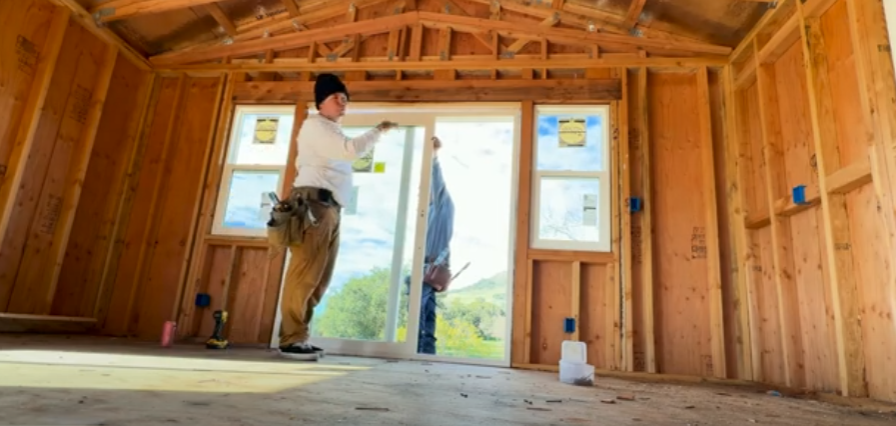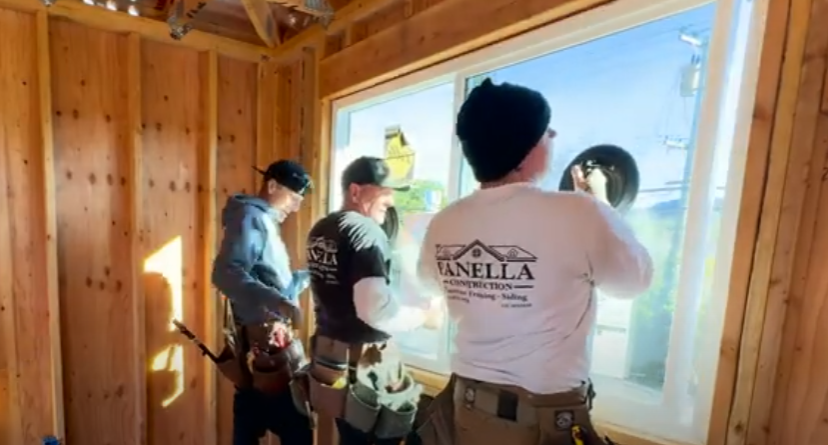The 1990s were a transformative decade for industries that relied on construction, carpentry, and installation trades. Windows, roofing, siding, and interior finishing all demanded not just skill but also efficiency. During this time, productivity was often measured by piece rates, where workers were paid according to the number of units they could install. It was a system that rewarded speed and consistency, while also challenging companies to maintain quality standards. In such an environment, having the right tools was critical, not just for meeting production targets but for ensuring safety, precision, and profitability. One could say that in the ’90s, a must-have tool for setting windows and meeting piece rate demands wasn’t just about hardware—it was about workflow, measurement, and consistency.

The Piece Rate System of the 1990s
Piece rate pay was not new in the ’90s, but it gained renewed attention in industries like window installation, roofing, and manufacturing. Companies often sought to maximize efficiency by paying workers per unit instead of by the hour. This meant installers and framers were under constant pressure to work faster, yet they also had to ensure their work met inspection standards.
For window installation in particular, piece rate pay could be lucrative for skilled tradespeople. A worker who could set 20 windows in a day earned much more than one who only managed 10. But this system required precision—mistakes meant rework, which cut into earnings. The solution? Workers leaned heavily on tools that allowed them to measure, level, and secure windows with speed and accuracy.

Essential Tools for Window Setting in the 1990s
While modern installers benefit from laser levels, cordless impact drivers, and high-tech measuring devices, the ’90s era installer relied on more traditional but still highly effective tools. A few of these became staples on every jobsite, particularly for those chasing piece rate incentives.
1. The Hammer and Nail Set
Even as pneumatic nailers grew in popularity, many installers in the ’90s still kept a reliable hammer on hand. For window shims, small adjustments, or finishing touches, nothing was as versatile. A nail set was also crucial for countersinking nails, preventing damage to the wood frames.
2. The Corded Drill
Cordless drills existed in the 1990s but were often underpowered and had limited battery life compared to today’s lithium-ion tools. The corded drill was the workhorse for window installers—used to drill pilot holes, drive screws, and anchor frames securely.
3. Levels (Bubble Levels and Early Laser Tools)
A perfectly level window was non-negotiable, both for function and appearance. Traditional bubble levels were the industry standard, with 24-inch and 48-inch models being the most common. Toward the late ’90s, early laser levels started appearing on jobsites, providing a glimpse of the future. For piece rate workers, a level saved time by reducing rework.
4. Tape Measures and Squares
Accuracy in measurement was essential. A durable tape measure was perhaps the most used tool in any installer’s kit, while framing squares ensured proper alignment. Consistency in measurement meant consistency in earnings when paid by piece.
5. Pry Bars and Utility Knives
Old window removal and adjustment often required brute force and finesse. Pry bars helped installers carefully remove trim, casing, or old window units, while utility knives were indispensable for cutting caulking, insulation, and flashing materials.
6. Caulking Guns
Energy efficiency was becoming a major theme in the ’90s construction industry, with tighter building envelopes required for new homes. Caulking guns ensured proper sealing around window frames, preventing air and water leaks.
7. Safety Gear
Though often overlooked at the time, safety equipment was beginning to receive more emphasis. Hard hats, gloves, safety glasses, and harnesses (for high-rise window installations) were slowly becoming part of standard practice. For those working piece rate, injuries could mean lost income—making safety tools equally important.
Why Tools Mattered More in Piece Rate Systems
In a piece rate environment, every second counted. If an installer spent too much time re-measuring, re-leveling, or correcting mistakes, their pay would suffer. Having reliable, efficient tools meant more completed windows per day and higher earnings. For example, a sharp utility knife could cut insulation cleanly the first time, while a dull one slowed work. A high-quality level meant fewer callbacks from supervisors.
Tools also shaped reputation. Skilled workers with the right equipment often got the most piece rate jobs, as foremen trusted them to deliver consistent results. In a sense, tools were not just physical aids—they were part of a worker’s identity and livelihood.
Setting Windows: The Process in the ’90s
To understand why tools were so important, it helps to break down the process of setting a window during this era:
- Removing the Old Window – Using pry bars and utility knives to carefully extract old units without damaging surrounding structures.
- Preparing the Opening – Measuring and squaring the rough opening to ensure the new window would fit snugly.
- Shimming and Leveling – Inserting shims and checking with a bubble level to ensure proper alignment.
- Securing the Frame – Using drills and screws to anchor the frame into the rough opening.
- Insulating and Sealing – Applying insulation around the perimeter and sealing with caulking to prevent drafts.
- Finishing Touches – Adding trim, casing, and cleaning to complete the installation.
Each step required precision, but also efficiency. The faster these steps were completed without error, the more units could be installed in a day.
The Transition From Hand Tools to Power Tools
The 1990s also marked a major transition from manual tools to power tools. Pneumatic nail guns became more common, drastically reducing installation time. Cordless drills, though still limited, began to find their way into tool belts. Workers who embraced these tools often outperformed those relying solely on traditional methods, giving them an advantage in piece rate systems.
This was also the decade when tool brands like DeWalt, Makita, and Milwaukee began to dominate job sites, introducing durable, job-specific power tools. The must-have tool for one installer might have been a trusty framing hammer, while another swore by the efficiency of a nail gun.
The Cultural Side of Tools in the ’90s
Beyond function, tools also had cultural significance in the 1990s trades. Many workers took pride in their toolkits, investing in high-quality brands as a badge of professionalism. Lunchroom debates often centered on which drill lasted longer or which hammer had the best balance. For younger apprentices, acquiring their own set of tools marked a rite of passage into the trade.
Piece Rate Pressures and Productivity
While piece rate systems encouraged efficiency, they also carried risks. Speed often tempted workers to cut corners, leading to mistakes or unsafe practices. Supervisors had to strike a balance between rewarding productivity and maintaining quality. This tension made the right tool not just helpful but necessary. A good tool allowed workers to go fast without compromising quality.
Conclusion
Looking back, the 1990s were a fascinating era for tradespeople, especially those working under piece rate systems in window installation. The must-have tools of the time were a mix of traditional and emerging technologies—levels, drills, tape measures, hammers, and caulking guns—all of which allowed workers to set windows quickly, accurately, and profitably.


